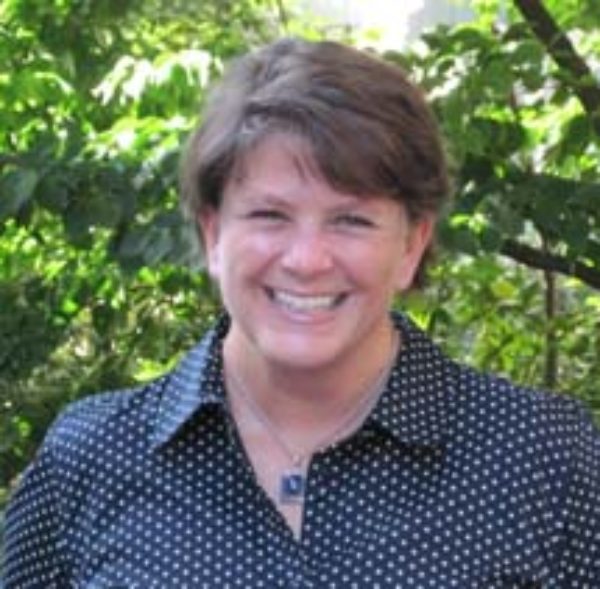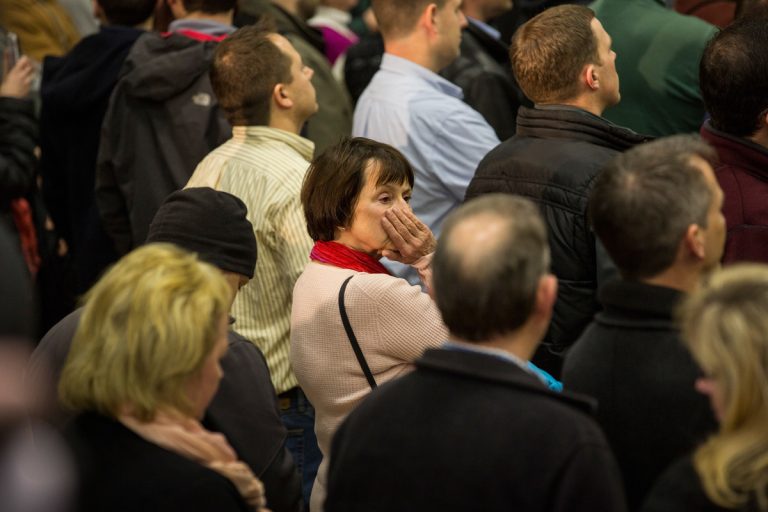
Image by Paul McGeiver/Flickr (CC BY-NC-ND 2.0)..
The Problem with Polls and the Polarization of America
An NPR article appeared in my Facebook feed recently about a Pew poll on religion and politics. After reading the article, I realized that I had participated over the phone in a beta version of this very poll in early August.
As I read the article, I was brought back to my experience responding to the poll’s questions; after I hung up the phone that day, I felt infuriated and depressed. My takeaway question was whether the polarization of opinions in the United States is as real as the media makes out, or whether it is, at least in part, a construct of polls like this one.
For a large majority of the questions asked of me by Pew, I was offered only black-and-white options from which to choose. For example, this NPR article primarily focuses on the poll question on religious institutions and whether or not they should be involved in politics.
This is an enormous question with a good deal of complexity: Involved in what ways? Advocating their beliefs from the “pulpit”? Being one voice at the table in a larger public dialogue on significant issues? Or directly influencing and even shaping policy?
Each is a different scenario and my answer depends on what is meant by “involved,” but my choices were simply “yes” or “no.”
Another question I was asked: “If you had to choose, would you rather have a smaller government providing fewer services, or a bigger government providing more services?” This is a question lawmakers have been debating since the beginning of the republic. But I’m given 30 seconds and a choice between two options only, both of which seem to me no more than a stereotype of Republican or Democrat ideology.
Even this question is inadequate: “Are you a Democrat or a Republican?” When I replied that I was not registered in either party — I am an Independent, but there are, in fact, 25 additional parties in my state in which I might be enrolled — instead of being asked for my affiliation I was asked, “With which party — Democrat or Republican — do your values most closely align?” I assume that my answer to this question was then ticked off as my registered affiliation, thereby forcing my participation in a two-party view of American politics.
Only if I said, “Those choices are pretty black and white and my response is not at either pole,” was I sometimes offered a marginally broader spectrum of answers (though not always, as in the case of party affiliation). When I inquired about this, the pollster informed me that only if I proactively asked for a spectrum would I be offered one. I mentioned several times that I found the poll to be worded in divisive ways, to which the poor poll-taker on the other end of the line had no response.
In reflecting on both my experience with this poll and the subsequent NPR article, it is increasingly clear to me why the media’s headlines constantly declare this country to be bitterly polarized. The construction of this Pew poll only allowed me an identity at one end of the spectrum or the other on questions around abortion, marriage equality, social safety nets, and religion and politics.
The “polarization” this poll serves to confirm is then amplified in the reporting. Indeed, the quote from Pew that NPR chose to feature expounds upon the “widening divide” between different groups.
Here’s my curiosity around all this: Are we really as divided as we are being told? Or is our so-called polarization just a crafted perception that we need to call out? We know that the extremes of either end of the spectrum tend to be the voices that shout the loudest and typically get American media airtime. After taking this poll, it seems to me that not only are extreme voices being given the most airtime but also that, in fact, pollsters exacerbate this dynamic by choosing the two extreme positions and then forcing poll respondents to fit into one or the other of those boxes.
Perhaps on a few issues, we may indeed be as far apart as we seem. But on so many other topics, might there be more points of connection than we suspect? Or at least enough to create space for conversation. How can we ever achieve bridge-building dialogue if we keep buying the media’s version of ourselves as hopelessly divided?
This question is one reason that shows like On Being, with its Civil Conversations Project, are so vital. It’s why active listening and conversation facilitation skills, like those taught in Non-Violent Communication at the Harvard Mediation Program and in Harvard Law School’s Facilitation Workshop, should be mandatory for every high school student. It’s why we need to question the headlines that the media feed us. It’s why we need to spend time talking, and much more importantly, listening to our neighbors — so that we can know them for who they truly are and so that we, too, can be known — if we want to have a chance of walking forward together.


Share your reflection